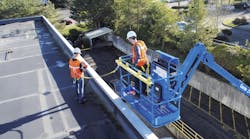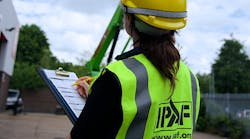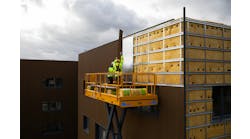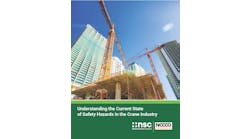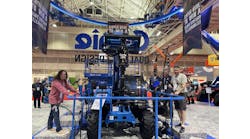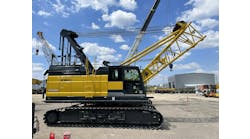Mobile elevating work platforms are safer than ever but sometimes a user needs to be rescued and rental staff should know what to do.
“Hey, Tom, this is Mark. I’m stuck up on this boom lift about 135 feet up, we need help, hurry, its cold.”
“Hey Mark, what’s the problem?”
“I think we ran out of fuel.”
“Did you try the emergency descent?”
“What’s that?”
Rescue means different things to different people. Is running out of fuel an emergency, preventable, life threatening? Maybe, depends on conditions and the operator’s and occupants’ experience and their mindset.
Let’s explore rescue from a mobile elevating work platform.
Reasons for a possible rescue include the number one most common call and reason, running out of fuel. This is by far the number one reason workers get stuck in a lift. Is it preventable? Yes! Did they do a pre-start? Did the pre-start include fueling? Did the pre-start include checking the emergency descent or auxiliary power from the platform and ground controls? Or battery charging in the case of electric lifts? If the operator conducts these easy checks, he will eliminate most rescue situations.
The second reason, specifically on the larger booms 120 feet and higher is overloading. Many of these larger lifts have a load-sensing system. If the platform is overloaded with things or is pushed against a structure overloading the system or negative loading the platform can cause a shutdown of the lift. Read the Operators Manual before operating. Feather boom controls when approaching a structure. Turn down boom control speeds. This is also preventable. Read the manual, slow down, practice, training and patience. The new ANSI A92 standard-designed lifts all will have load sensing. Each OEM will manage this differently -- the best way to know how these lifts will react to overloading is to read the manuals.
What about failure of the lift. Total breakdowns are rare, which creates a false sense of security. If it has never happened to you or on your job you might never consider it. Again, auxiliary power or emergency descent procedures can recover lifts in most all breakdown situations.
Now we get to even rarer possible rescue situations. What if the operator is incapacitated or has fallen out of or been catapulted out of the lift? Now you’ve got a critical event that needs fast and informed rescue. The rescuer does not want to make the situation worse or injure someone. Again, ground controls can recover the platform to the ground. Some things to consider are:
- Assess the situation, if you think the reason for rescue is that the lift or the person has contacted a high voltage line, do not proceed to try to rescue them! Call 911 and the power company.
- Call your supervisor and advise them of the situation.
- Consider the sequence of lowering. Telescoping in first, then lowering is usually best, but think through the path of the platform to safe ground.
- On scissors with a rollout deck, have the occupants roll the deck(s) in to avoid a descent collision with an obstruction.
- Can the operator self-rescue?
- Is the operator conscious and able to participate in the rescue?
- Is the operator capable, and not in a state of panic?
- Assisted rescue may be required if the operator is:
- Unconscious and must be rescued
- Fallen outside platform, hanging from personal fall protection equipment, such as suspension relief straps or toe loops
- Entrapped
- Other health issue
In the event of a technical rescue, the rental company should ensure that all personnel are trained, including the operator and other occupants and other ground personnel. All personnel should be equipped in advance with fire and police rescue information and be prepared to assist them in a rescue.
Rental company staff should have and be able to conduct and instruct customers on formal training and enactment rescue with self-rescue controlled rope descent systems.
In summary, most rescues can be avoided with proper training and a good thorough pre-start inspection, as well as making sure there is trained personnel in the platform and on the ground. Thorough pre-work risk assessment and task planning will also reduce the likelihood of a need for a rescue.
Resource materials:
https://www.sunbeltrentals.com/customerservice/safety/ Statement of Best Practices industry guidance documents, Training, Fall Protection and Risk Assessment
www.jlg.com search manuals
www.genielifts.com search manuals
www.skyjack.com search manuals
Jeff Stachowiak is national safety training director for Sunbelt Rentals

